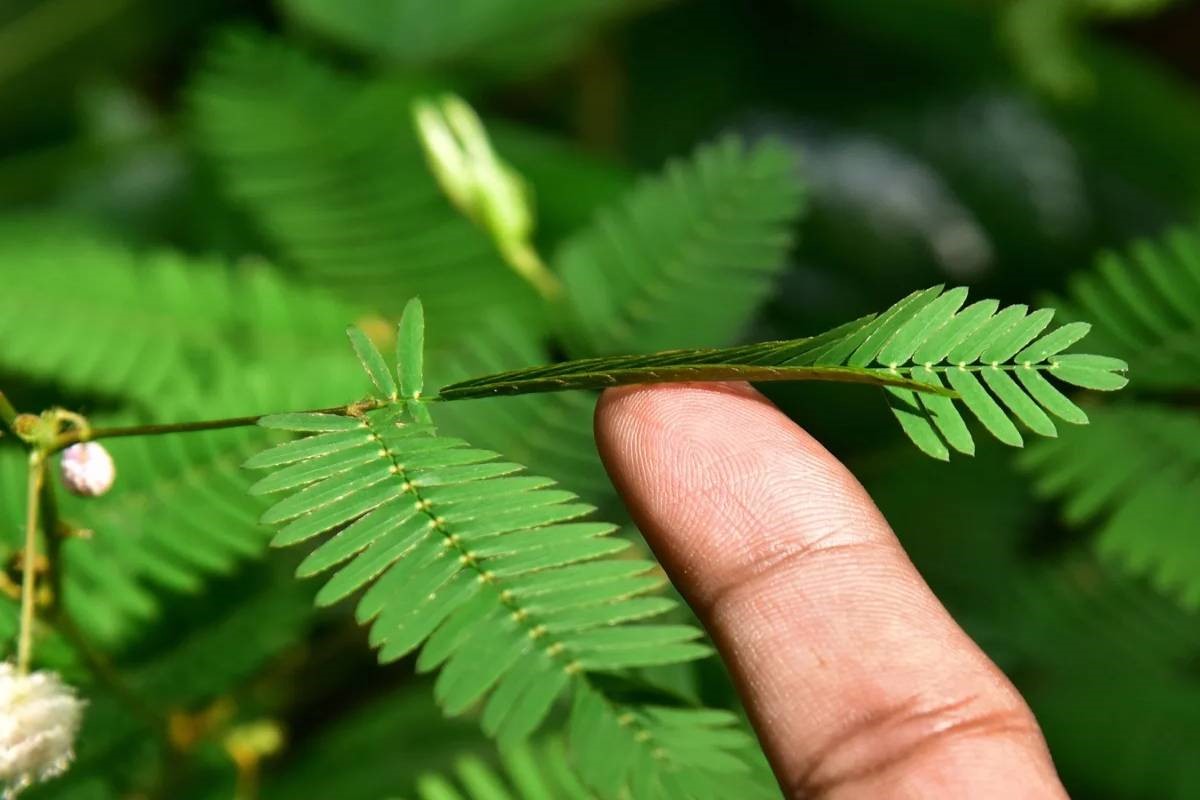
How do plants protect themselves from threats like herbivores, pathogens, and environmental stressors? Plants have evolved an impressive array of defense mechanisms to ensure their survival. From chemical compounds that deter herbivores to structural barriers like thorns and waxy leaves, plants are far from defenseless. Some even form symbiotic relationships with ants or beneficial microbes for added protection. These defenses can be either always present (constitutive) or activated only when needed (induced). Understanding these strategies not only helps us appreciate the complexity of plant life but also has practical applications in agriculture, such as breeding more resilient crops and reducing pesticide use. Dive into the fascinating world of plant defenses and discover how these green warriors stand their ground.
Key Takeaways:
- Plants have two types of defenses: always-on (constitutive) and activated-when-needed (induced). They balance growth, reproduction, and defense by reallocating resources.
- Plants use chemicals, physical barriers, and symbiotic relationships to protect themselves. Understanding plant defenses can lead to more resilient crops and effective disease management strategies.
Constitutive vs. Induced Defenses
Plants have evolved various strategies to protect themselves from threats. Some defenses are always present, while others are activated only when needed.
- Constitutive Defenses: These are always active, providing constant protection.
- Induced Defenses: Activated only when a threat is detected, saving energy.
Resource Allocation and Trade-offs
Plants must balance growth, reproduction, and defense. This often involves reallocating resources.
- Resource Reallocation: Plants divert resources to produce defensive compounds.
- Growth vs. Defense: Investing in defense can reduce growth and reproduction.
Chemical Defenses
Plants produce a wide range of chemicals to deter herbivores and pathogens.
- Toxic Compounds: These chemicals can kill or deter herbivores.
- Pathogen-Degrading Enzymes: Enzymes break down pathogens, protecting the plant.
Structural Defenses
Physical barriers provide the first line of defense against threats.
- Cell Walls: Made of cellulose, hemicellulose, and pectins, providing strength.
- Waxy Cuticles: Prevent water loss and deter herbivores.
- Bark: Protects against physical damage and pathogens.
Induced Volatile Organic Compounds (VOCs)
Plants release VOCs to signal for help from natural enemies of herbivores.
- Attracting Predators: VOCs attract predators of herbivores, providing indirect defense.
Symbiotic Relationships
Some plants form beneficial relationships with other organisms for protection.
- Ant-Plant Relationships: Ants protect plants from herbivores in exchange for food or shelter.
- Beneficial Microbes: Bacteria and fungi on plant surfaces can provide additional protection.
Physical Deterrents
Plants have evolved various physical traits to deter herbivores.
- Thorns: Sharp structures that prevent herbivores from feeding.
- Waxy Leaves: Make it difficult for herbivores to eat the leaves.
Toxic Chemicals
Plants produce a variety of toxic chemicals to protect themselves.
- Hydrogen Peroxide: Used to counterattack fungal enzymes.
- Salicylic Acid: Found in many fruits and vegetables, also a precursor for aspirin.
Theories of Plant Defense
Several theories explain how and why plants allocate resources to defense.
- Optimal Defense Theory: Plants defend different tissues based on vulnerability and cost.
- Plant Apparency Hypothesis: More apparent plants need broader defenses.
- Carbon:Nutrient Balance Hypothesis: Defense synthesis is influenced by nutrient availability.
- Resource Availability Hypothesis: Defense strategies are determined by growth rate and resource availability.
- Growth-Differentiation Balance Hypothesis: Trade-off between growth rate and defense investment.
Herbivore Counter-Strategies
Herbivores have evolved ways to overcome plant defenses.
- Specialized Digestive Enzymes: Help break down toxic compounds.
- Behavioral Adaptations: Some herbivores avoid the most defended parts of plants.
Inducible Defenses
These defenses are activated only when herbivores are present.
- Energy Savings: Inducible defenses save energy by being produced only when needed.
- Morphological Changes: Induced defenses often involve changes in plant structure.
- Volatile Release: Some induced metabolites are released as volatiles to attract predators.
Antimicrobial Proteins
Plants produce proteins to defend against microbial pathogens.
- Antimicrobial Proteins: Secreted to fight off fungi and bacteria.
- TGNap1 Protein: Controls the movement of antimicrobial proteins out of plant cells.
Plant Anatomy and Defense
Understanding plant anatomy helps explain how structural barriers protect against threats.
- Cell Wall Composition: Cell walls provide a physical barrier to pathogens.
- Cuticles and Bark: Additional layers of protection.
Ecological Relationships
Plants interact with other organisms in ways that enhance their defenses.
- Beneficial Microbes: Bacteria and fungi can help protect plants.
- Natural Enemies: Plants attract predators of herbivores through VOCs.
Disease Management
Understanding plant defenses is crucial for managing plant diseases.
- Disease-Resistant Crops: Breeding for enhanced defenses can reduce the need for pesticides.
- Pathogen Interactions: Studying these interactions helps develop effective disease management strategies.
Glucosinolates
These compounds are toxic to many herbivores and pathogens.
- Bitter Taste: Responsible for the sharp taste of mustard and wasabi.
- Toxicity: Effective against insects, nematodes, and bacteria.
Taproot Function
Taproots play a crucial role in plant defense and nutrient storage.
- Nutrient Storage: Taproots store starch and nutrients.
- Water Collection: Taproots help plants access water from deep in the soil.
Plant Breeding for Defense
Breeding can enhance plant defenses, reducing the need for chemical pesticides.
- New Varieties: Breeding aims to create plants with desirable traits like resistance to herbivores.
- Environmental Impact: Reducing pesticide use benefits human health and the environment.
Fossil Record of Herbivore Damage
Fossils show that plants and herbivores have coexisted for millions of years.
- Evolution of Defenses: Coexistence has driven the evolution of plant defenses.
Cost-Efficiency in Defense Production
Plants produce defenses only when necessary to save energy.
- Energy Efficiency: Producing defenses only when needed ensures efficient use of resources.
Herbivore-Plant Interactions
Studying these interactions helps understand ecological dynamics.
- Ecological Impact: Plant defenses shape herbivore populations and diversity.
Crop Improvement
Knowledge of plant defenses can lead to more resilient crops.
- Productivity: Enhanced defenses can improve agricultural productivity.
Protein Trafficking in Plant Cells
Understanding protein trafficking is crucial for boosting crop productivity.
- TGNap1 Protein: Plays a key role in transporting antimicrobial proteins.
Pathogen Growth Limitation
Plants limit pathogen growth through various strategies.
- Antimicrobial Proteins: Secreted to fight off pathogens.
- Cell Wall Strengthening: Enhances resistance to pathogen invasion.
Immune Response in Plants
Plants have an immune system that responds to threats.
- Defense Compounds: Movement of these compounds within cells is crucial for coordinating responses.
- Programmed Cell Death: Plants can induce cell suicide to prevent further infection.
Plant-Pathogen Interactions
Understanding these interactions is key for developing disease-resistant crops.
- Disease Management: Effective strategies depend on understanding plant-pathogen dynamics.
The Vital Role of Plant Defenses
Plant defenses are crucial for their survival. They use a mix of chemical and structural defenses to fend off herbivores, pathogens, and environmental stressors. Some plants have constitutive defenses always ready, while others rely on induced defenses that activate when needed. These strategies include producing toxic compounds, forming symbiotic relationships with ants, and releasing volatile organic compounds to attract predators of herbivores.
Understanding these defenses helps in crop improvement and disease management. By breeding plants with enhanced defenses, we can reduce reliance on chemical pesticides, promoting more sustainable agriculture. The study of plant defenses also sheds light on ecological interactions, revealing how plants and herbivores have co-evolved over millions of years.
In short, plant defenses are a fascinating and vital aspect of botany, offering insights that benefit both agriculture and ecology.
Frequently Asked Questions
Was this page helpful?
Our commitment to delivering trustworthy and engaging content is at the heart of what we do. Each fact on our site is contributed by real users like you, bringing a wealth of diverse insights and information. To ensure the highest standards of accuracy and reliability, our dedicated editors meticulously review each submission. This process guarantees that the facts we share are not only fascinating but also credible. Trust in our commitment to quality and authenticity as you explore and learn with us.


